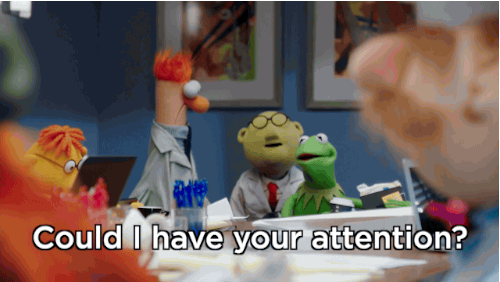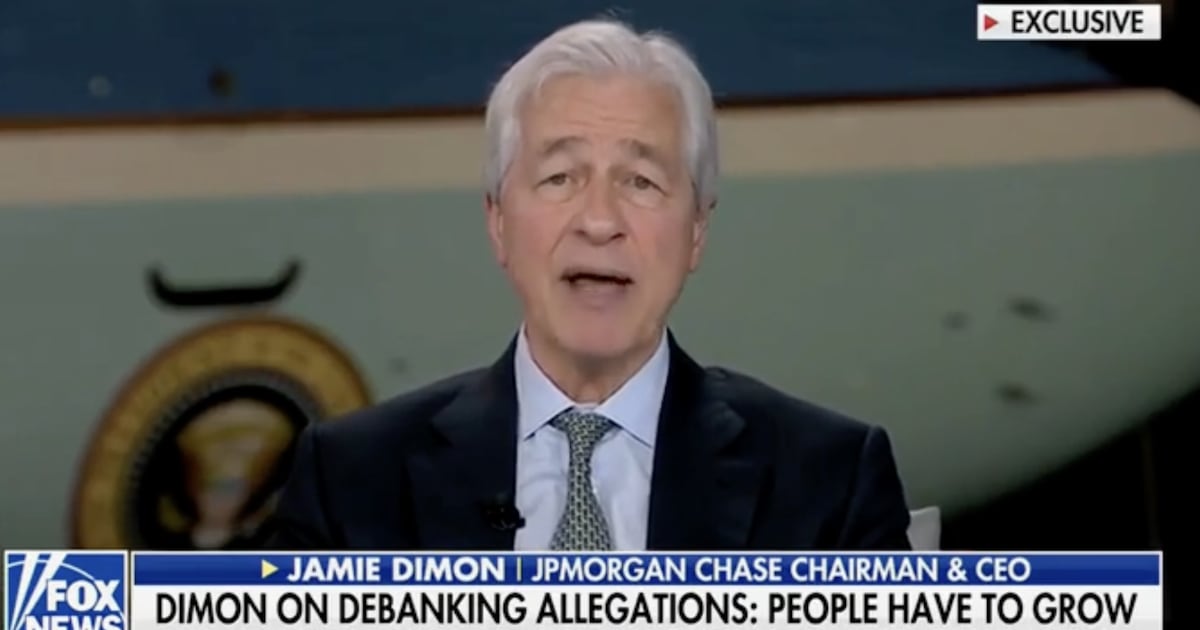Beware ‘Smokescreen Trolling,’ Trump Followers' Favorite Tactic
Trumpists have weaponized a new technique to win the ideological war. How pro-democracy voices respond to it matters.
Some of the claims coming out of the Trump camp in recent weeks are laughable: that Joe Biden is the Hamburglar, that Democrats are conspiring to take away the Chick-fil-A sauces of “real” Americans, that socialism is making your burritos more expensive. Some are much more serious, but just as demonstrably false: that the 2020 election was stolen, that Democrats are guilty of widespread voter fraud, that the January 6th insurrection wasn’t an insurrection at all. Others are couched in fears about “critical race theory” (even among those who can’t seem to define it), and the concern that liberals are woke Harry Potters roaming the countryside, indiscriminately casting the spell expecto cancellation.
 These are disinformation campaigns. At the same time, “disinformation” doesn’t fully capture it. In fact, it’s difficult to find an existing term that does. Many of these claims echo philosopher Harry Frankfurt’s definition of bullshit: assertions made to persuade others without any concern for the truth. Fact check a bullshitter’s claim all you want, they’ll just shrug and keep talking.
These are disinformation campaigns. At the same time, “disinformation” doesn’t fully capture it. In fact, it’s difficult to find an existing term that does. Many of these claims echo philosopher Harry Frankfurt’s definition of bullshit: assertions made to persuade others without any concern for the truth. Fact check a bullshitter’s claim all you want, they’ll just shrug and keep talking.
As Ashley Parker of The Washington Post explains, people who shared stories about endangered hamburgers, for instance, likely knew they were false. But that didn’t matter—the point was that Democrats hate conservatives’ freedoms so much that they would take away your meat.
“Bullshit” doesn’t quite cut it either, though, for a basic reason: While many Trumpists probably know how absurd these claims are on the surface, they wholeheartedly embrace their underlying sentiments. They’re committed to the deeper stories and beliefs that give rise to them—who counts as an American, whose voice deserves to be heard, and who gets to shape the country’s future.
I call it “smokescreen trolling”: flooding the zone with (bull)shit and lighting the fuse to every moral panic possible, while obscuring the underlying assaults against pluralistic, multiracial democracy. (WNYC’s On the Media recently described a similar dynamic as an “authoritarian mullet”: culture wars in the front, attacks against democracy in the back.)
 To win the ideological war, Trumpists have been effectively weaponizing smokescreen trolling. The only surefire way to counter it—and the widespread, coordinated attacks it cloaks—is through strong voting rights legislation. But in the meantime, this battle is being fought on the rhetorical front. How pro-democracy voices respond matters.
To win the ideological war, Trumpists have been effectively weaponizing smokescreen trolling. The only surefire way to counter it—and the widespread, coordinated attacks it cloaks—is through strong voting rights legislation. But in the meantime, this battle is being fought on the rhetorical front. How pro-democracy voices respond matters.
First off, I don’t use the term “trolling” lightly. Over the past decade, it has morphed from describing a very specific subcultural identity to just about anything someone might not like on the internet. Since publishing my 2015 book This Is Why We Can’t Have Nice Things, which traces the origins of trolling subculture on 4chan, I’ve argued over and over again against using “trolling” as a broad behavioral catchall. For one thing, when the same word is used to describe harmless mischief and white supremacist attacks, it makes the really terrible stuff seem like a subset of internet play. It also has the tendency to cordon “real life” from “just the internet,” which has always been a false distinction but is especially inappropriate when describing things like racist violence.
But in this case, Trumpist politicians have earned the label by adopting the exact strategies and tactics that 4chan’s trolls perfected throughout the aughts. These strategies include driving wedges between groups, sowing distrust in institutions, and undermining good-faith civic discourse through tactics like over-the-top provocation, tricking people into repeating sensationalist claims, gaming algorithms and keyword search, weaponizing hot-button cultural issues, organizing false outrage campaigns, coordinating targeted harassment (often by directing a “personal army” against a chosen victim), and generally gaslighting.  When Trumpists post wild accusations to social media, they’re not open to having their minds changed, and they will be impervious to whatever facts you think they might be missing. They will, however, be very pleased by your efforts to try.
When Trumpists post wild accusations to social media, they’re not open to having their minds changed, and they will be impervious to whatever facts you think they might be missing. They will, however, be very pleased by your efforts to try.
Here, too, Trumpists are aligned with old-school trolling. The goal for trolls on 4chan was the amassment of lulz, amusement in response to a target’s anger, frustration, or disgust.
 For Trumpist politicians, the goal is much loftier than lulz: It’s power. Still, the anger, frustration, and disgust of targets plays a critical role. Tempting the opposition to dunk on obvious falsehoods and over-the-top MAGA performance art only helps their bad-faith claims win the news cycle. This is precisely how I found out about Cruz’s Flag Day tweet; it was trending on Twitter, spurred on by how many people were making fun of him.
For Trumpist politicians, the goal is much loftier than lulz: It’s power. Still, the anger, frustration, and disgust of targets plays a critical role. Tempting the opposition to dunk on obvious falsehoods and over-the-top MAGA performance art only helps their bad-faith claims win the news cycle. This is precisely how I found out about Cruz’s Flag Day tweet; it was trending on Twitter, spurred on by how many people were making fun of him.
This isn’t a traditional amplification argument—the idea that if you share these kinds of messages, even by critiquing them, it will risk exposing other Trump voters to falsehood. Thanks to the increasingly insular and extreme far-right media ecosystem, supporters of this ideology are already steeped in these messages. Politicians like Ted Cruz are playing a game of catchup with them, not the other way around.
The true amplification concerns relate to what doesn’t trend because of what is trending. Ted Cruz dunkfests are easy, fun, and satisfying. They sure can feel like fighting the power. But that’s what makes them such an effective smokescreen.
 To counter this tactic, the first step is to identify when it’s happening. This can be tricky, as there’s often a thin line between Trumpists like Ted Cruz who clearly know better and those who genuinely believe the things they’re saying. But forget what the politician actually believes. When what they say aligns with the strategies and tactics of trolling, imagine a 😂 at the end of their tweet, quote, or press release. This serves as a reminder to slow down and consider how a proposed response—from fact checking to “but actually-ing” to pointing and laughing—might end up boosting the nonsense and obscuring the underlying sincerity of the Trumpist project.
To counter this tactic, the first step is to identify when it’s happening. This can be tricky, as there’s often a thin line between Trumpists like Ted Cruz who clearly know better and those who genuinely believe the things they’re saying. But forget what the politician actually believes. When what they say aligns with the strategies and tactics of trolling, imagine a 😂 at the end of their tweet, quote, or press release. This serves as a reminder to slow down and consider how a proposed response—from fact checking to “but actually-ing” to pointing and laughing—might end up boosting the nonsense and obscuring the underlying sincerity of the Trumpist project.
 Don’t help them do that. Instead, refuse to play their game, and insist on a different one entirely—an approach that also helped counter subcultural trolling. As cognitive linguist George Lakoff has suggested, reframe the discussion away from what the Trumpists want you to talk about and toward the deeper truths buried within the stories that must be talked about.
Don’t help them do that. Instead, refuse to play their game, and insist on a different one entirely—an approach that also helped counter subcultural trolling. As cognitive linguist George Lakoff has suggested, reframe the discussion away from what the Trumpists want you to talk about and toward the deeper truths buried within the stories that must be talked about.
 Describe the specific actions they and other officials in their state have undertaken to suppress the vote, reinforce white supremacy, and threaten citizens’ freedoms. Particularly if a story is already trending, responses that call attention to what strategies and tactics are being used and why they’re being used can help others understand how they’re being manipulated, where they should be directing their attention instead, and what is at stake
Describe the specific actions they and other officials in their state have undertaken to suppress the vote, reinforce white supremacy, and threaten citizens’ freedoms. Particularly if a story is already trending, responses that call attention to what strategies and tactics are being used and why they’re being used can help others understand how they’re being manipulated, where they should be directing their attention instead, and what is at stake
Organizations, including universities, have a critical role to play as well. Journalists and academics have already been targeted in coordinated, smokescreen trolling campaigns; recent cases include the firing of Emily Wilder and the sweeping disinformation campaign against Nikole Hannah-Jones.
 As Joan Donovan, Research Director of the Shorenstein Center on Media, Politics and Public Policy, recently explained, this will only get worse. Scholars teaching classes on race are particularly vulnerable to attacks against critical race theory—or what gets lumped under that poorly-defined label. Communications teams need to be prepared to identify and push back against bad-faith social media attacks before they happen, and leadership teams must be ready to stand behind targeted employees. (Or, at the very least, not to cave to the first rumblings of outrage on Twitter.) For all the rightwing pearl-clutching about cancel culture and its alleged threats to intellectual freedom, smokescreen trolling is an actual threat to free speech. Principled conservatives should be appalled by it.
As Joan Donovan, Research Director of the Shorenstein Center on Media, Politics and Public Policy, recently explained, this will only get worse. Scholars teaching classes on race are particularly vulnerable to attacks against critical race theory—or what gets lumped under that poorly-defined label. Communications teams need to be prepared to identify and push back against bad-faith social media attacks before they happen, and leadership teams must be ready to stand behind targeted employees. (Or, at the very least, not to cave to the first rumblings of outrage on Twitter.) For all the rightwing pearl-clutching about cancel culture and its alleged threats to intellectual freedom, smokescreen trolling is an actual threat to free speech. Principled conservatives should be appalled by it.
It’s easy to assume that the next big fight in American politics is the 2022 midterms, followed by the 2024 presidential election. But the truth is that the fight is already underway—the outcome of the ‘22 and ‘24 elections hinge on what happens right now. The overwhelming majority of people can’t personally shape the legislative agenda or enact structural change. But how we respond on social media influences what news stories are written, what ends up trending, and what narratives prevail. In big and small ways, we all can help raise the alarm about everything the country stands to lose, allowing pro-democracy forces to coordinate and collectively pressure those who can shape the legislative agenda and can enact structural change. We do that, at every turn, by foregrounding what is happening behind the smokescreen and absolutely refusing to play the trolls’ game.



No comments:
Post a Comment